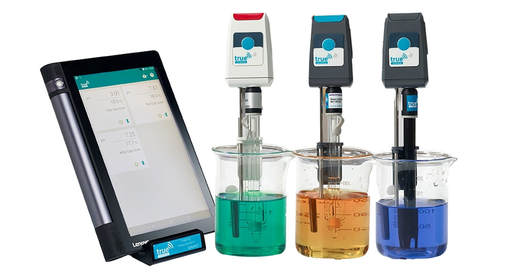Measuring pH of low ionic strength solutions
5 July 2018
5 July 2018
pH meters use the amount of dissolved salts in a solution to make measurement. With plenty of salts, measurements can be made using an electrode and meter quickly and precisely. Samples without those salts, with low ionic strength and conductivity such as pure water, can make measurement difficult.
Care needs to be taken in order to measure the pH of low ionic strength/conductivity solutions. The difference between the concentrations of the electrode’s fill solution and of the sample’s can lead to significant junction potentials, which can lead to poor precision, drifting results and slow stabilisation. Selecting the correct pH probe for the job and following a few steps can significantly reduced error in measurement.
For more advice on choosing the correct method for measuring low ionic strength/low conductivity samples please email us at and we can give you advice on your individual application.
